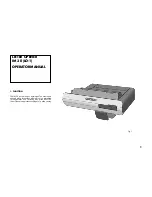
Required tools and materials
•
645C2=* copying pen, tape measure, measurement sheet and reduction table (see appendices), 716Y3 half-
round file, 716Y4 round file, 649G22=180 grit cloth
Remove the plaster cast from the residual limb, fill with
plaster, insert a reinforcing bar and allow the plaster
model to cure.
Identify and mark reference points for the circumferen
tial and length measurements on the plaster model.
Determine the circumferential and length dimensions.
Record the dimensions on the measurement sheet.
Divide the plaster model into four sections (anterior,
posterior, medial and lateral) and mark.
Mark the transitions between convex and concave
shapes with horizontal lines.
Reduce the distal end of the model by
5 mm
to
8 mm
without changing the shape.
If there is overhang of soft tissue, more reduction may
be necessary.
Reduce the circumference of the plaster model globally
by
4%
or dependent on the residual limb shape and the
tissue condition.
Reduce the circumference of the plaster model evenly,
dependent on the residual limb shape and the tissue
condition:
MPT:
Reduce by
2%
to
2.5%
Area a:
Reduce by
3%
to
4%
Area b:
•
Reduce globally by
3%
to
5%
Muscular residual limb with firm soft tissue coverage
•
Cylindrical residual limb:
4%
•
Conical residual limb:
5%
Soft residual limb with easily movable soft tissues
•
Cylindrical residual limb:
3%
to
4%
•
Conical residual limb:
4%
Ottobock | 11
Harmony System
Procedure
Summary of Contents for Harmony P3
Page 32: ...Harmony System 32 Ottobock...
Page 33: ...Ottobock 33 Harmony System...
Page 34: ...Harmony System 34 Ottobock...












































